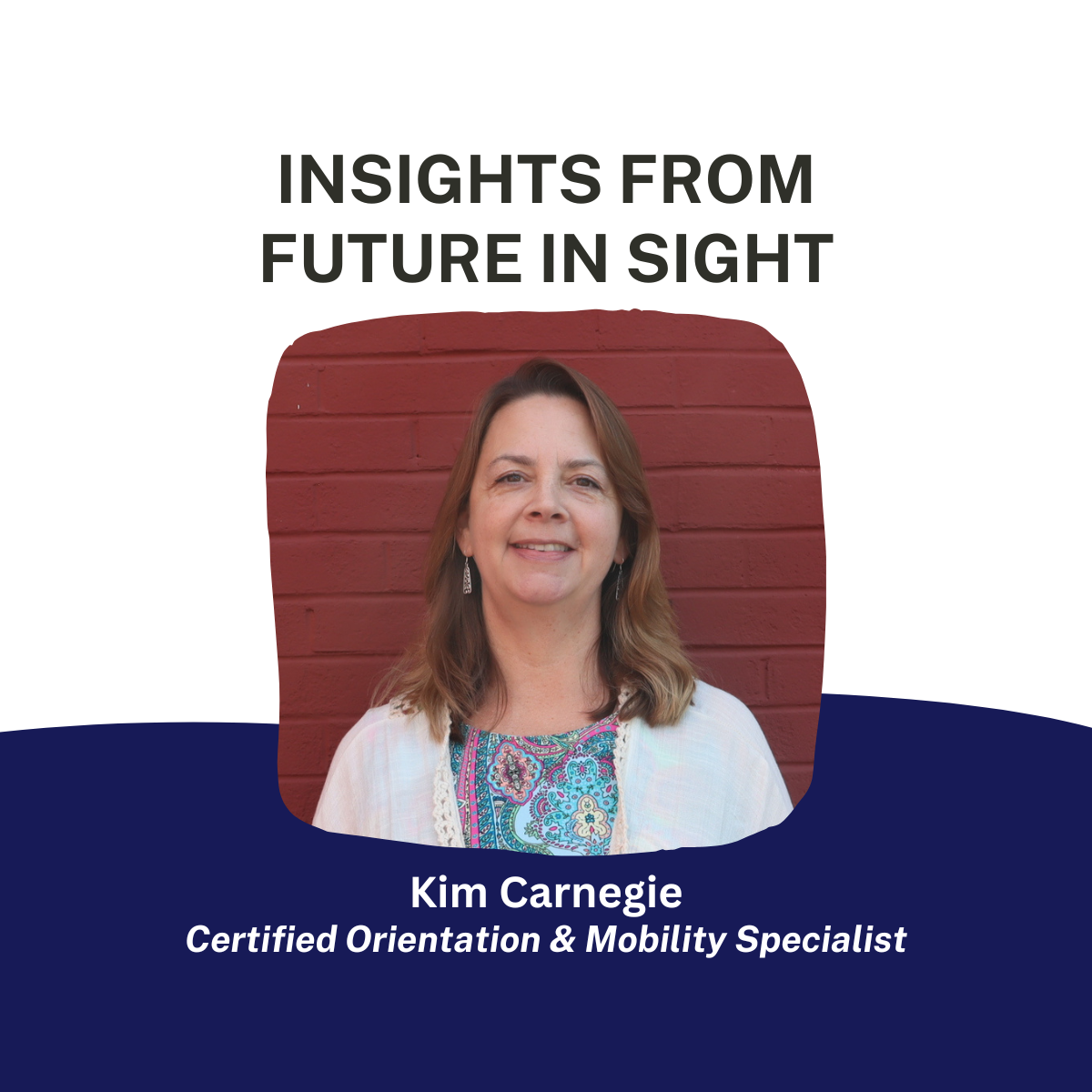
As a Certified Orientation and Mobility Specialist with Future In Sight, I have the distinctive opportunity to meet and connect with older adults from many different areas of our state. This is an enriching experience, as every person is unique and has a story to share. In spending time with older adults to explore their mobility needs and the impacts of visual impairment on their lives, I get to hear firsthand how much they want to maintain their independence and navigate the community as safely as possible. Many of our clients enjoy interacting with and supporting their visually impaired peers. There is a warm sense of community and humor among the adults we serve. It is valuable to hear how they learn to compensate for low vision and adjust to the process of vision loss.
The number of visually impaired adults is growing as our population ages. As we connect with our aging population, it is important to dispel the myths about older adults being inflexible, disengaged, or unproductive. Many of the adults I serve are active, social and motivated to learn new skills. Orientation & Mobility (O&M) training can expose adults with visual impairment to unfamiliar environments in a controlled way that helps reduce anxiety about the unknown. Many of my clients learn to use a long cane to detect obstacles, drop offs and other clues in their environment that allow for increased independence during travel. Others learn how to self advocate and use the human guide technique to teach others how to safely guide them in crowded or unfamiliar places. After training, many of the older adults I work with express excitement and gratitude about gaining new skills and having newfound confidence in navigating their community.
Research has shown that O&M training has many benefits for older adults who are experiencing vision loss, including fall reduction, an increase in the use of long canes, an increase in confidence level for travel to unfamiliar areas, and an increase in sense of control over their environment. Providing instruction in areas such as public transportation can help adults with vision loss overcome obstacles and increase independence. With increased independence comes an increase in opportunities for older adults to connect with others and participate in community activities.
We can all relate to the vital role of community resources in combatting isolation and how social connections have a positive impact on our overall well-being. Supporting independence in the aging population and encouraging adults with visual impairment to get out into their community is beneficial to physical and mental health. We at Future In Sight appreciate our older adult clients and the trust they give us when we enter their homes to provide training for the tools and strategies that fit their individual needs.
Tips for older adults with visual impairments during community travel:
- Wear sunglasses and a wide brimmed hat when traveling outdoors to reduce glare
- Dress appropriately for the weather and wear brightly-colored clothing or a jacket/vest with reflective material to increase visibility
- Use a long cane, after receiving the proper training, to detect obstacles and reduce falls
- Teach other adults the proper Human Guide technique as using a long cane may not be sufficient in unfamiliar or complex areas
We provide training, tools and resources to individuals of all ages who are blind and visually impaired and even offer a full calendar of activities. If you or someone you love is experiencing vision loss and could benefit from our services, please contact Future In Sight at [email protected] or 603-224-4039 today!
About the Author: Kim Carnegie is a Certified Orientation & Mobility Specialist at Future In Sight.

